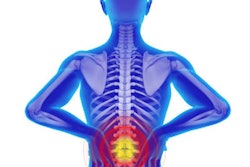
Do primary care providers (PCPs) appropriately order diagnostic imaging for musculoskeletal complaints? They could do better, suggests a study published July 4 in Arthritis Care and Research.
Why? Because not only does unnecessary imaging often fail to address the presenting clinical question, it also can negatively affect patients -- for example, with unneeded radiation exposure.
"[Evidence suggests patient-reported outcomes such as pain and function do not improve in patients who receive imaging compared to those who do not," noted a team led by Romi Haas, PhD, of Monash University in Melbourne, Australia.
Clinical practice guidelines discourage imaging for musculoskeletal complaints unless pathology is suspected, they noted; both the American College of Radiology (ACR) and the American Board of Internal Medicine (ABIM) have "choosing wisely" initiatives that recommend avoiding unnecessary imaging.
But primary care providers continue to order imaging for low back, shoulder, or knee pain, the team reported: in Australia, the likelihood of a PCP ordering an imaging test increased by 9% between the period of 2002 to 2005 and the period of 2009 and 2012.
Haas and colleagues sought to evaluate PCPs imaging exam ordering patterns using data from the Population Level and Analysis and Reporting (POLAR) database to perform a study that considered imaging PCP imaging exam requests for 133,279 patients with low back (57%), neck (11%), shoulder (20%), and knee (25%) pain between 2014 and 2018.
They found the following:
- Imaging was most common among those with shoulder pain (49%), followed by knee (43%), neck (34%), and low back pain (26%).
- Many patients had orders for more than one type of diagnostic imaging, with the most common combinations being shoulder x-ray and ultrasound; knee x-ray and either MRI or ultrasound; and low back x-ray and CT.
- Body regions were a strong predictor of imaging orders, with the odds of a PCP ordering imaging 49% lower for patients with low back pain and 31% lower for those with neck pain, but 56% higher for those with shoulder pain.
Although the group did not report an overall change in imaging rates over the study time frame, it did discover a shift toward more advanced imaging exams, particularly for low back and neck pain, finding that MRI orders for these complaints increased while orders of CT and x-ray imaging decreased.
| Changes in imaging exam ordering for musculoskeletal pain, 2014 to 2018 | |||
| Pain type | Proportion of MRI exams ordered | Proportion of CT exams ordered | Proportion of x-ray exams ordered |
| Low back | 1.3% | -1.3% | n/a |
| Neck | 3% | n/a | -3.1% |
"A move towards more complex imaging is not only concerning due to the heightened risk of overdiagnosis and overtreatment and greater financial cost, [but also] the carbon footprint of MRI and CT is 23- and 12-times greater than plain x-ray respectively, indicating these tests also have a significant environmental impact," Haas and colleagues noted.
So why do PCPs continue to order unnecessary musculoskeletal imaging? For lower back pain in particular, factors may include patients' request for imaging; a desire to reassure patients who are in pain; or a lack of time to explain why a scan may not be needed, the group wrote.
What is needed are multifaceted interventions to support appropriate imaging that are tailored to patients, their doctors, and policymakers, according to the authors. These interventions could take the form of targeted media campaigns and feedback to providers who commonly order overused musculoskeletal diagnostic imaging tests.
In any case, the need to reduce unnecessary imaging for musculoskeletal pain is pressing, the investigators noted.
"Multifaceted strategies to improve appropriate imaging requests for people with musculoskeletal complaints are urgently needed," they concluded.
The complete study can be found here.




.fFmgij6Hin.png?auto=compress%2Cformat&fit=crop&h=100&q=70&w=100)




.fFmgij6Hin.png?auto=compress%2Cformat&fit=crop&h=167&q=70&w=250)











